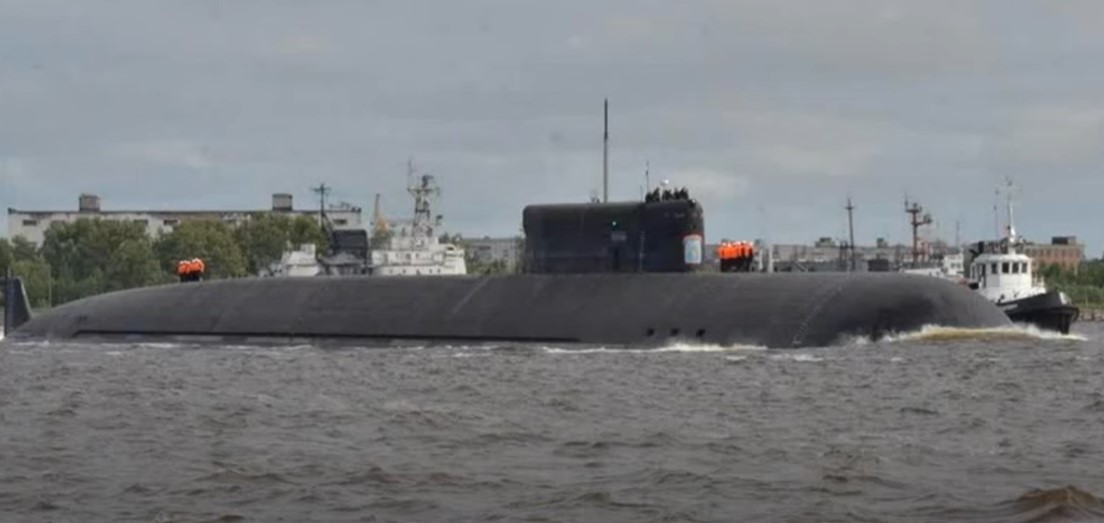Arms race in the deep: ‘Seabed Warfare’
An article published in issue 148 (July-August 2022) of the German military journal Deutschen Militärzeitschrift (DMZ), examined underwater warfare in the 21st century and its importance for geopolitical and security policy. Due to the current developments surrounding the acts of sabotage on the Baltic Sea pipelines Nord Stream 1 and 2, this article has gained unexpected prominence.
Published: September 30, 2022, 9:21 am
Against the background of recent tensions with Russia, the Russian-German Baltic Sea pipeline Nord Stream 2 was put on hold a few weeks ago. The multi-billion-dollar pipeline, which was supposed to help supply Europe with Russian gas, will not go into operation for the foreseeable future.
This means that not only Western politicians but also one or two NATO officers have one less thing to worry about. Because the hard-fought Baltic Sea pipeline is not only causing headaches for transatlantic political strategists, but also for American military leaders: for a long time there has been a suspicion that the Russians, responsible for the maintenance, monitoring and control of the pipeline under the contract, had gained too much insight into NATO’s activities.
Western observers maintain that highly sensitive sonar systems were being delivered to the Baltic Fleet base in Kronstadt near Saint Petersburg, which were to be connected to the fiber optic cable running parallel to the pipeline. This would have given the Russian Navy a powerful early warning system against western surface and underwater units.
‘Seabed warfare’
“You have to take this concern seriously,” complained the security magazine Loyal. “With every maintenance work on the pipeline by Russian crews, the danger increases that installations are made that have military purposes and threaten NATO submarines or even communication lines. This aspect has not been taken into account in the pipeline permitting procedures.”
The key term in this context is: Seabed Warfare. Western military officers are primarily focusing on the Russian side, which in relevant scenarios is believed to be capable of “low-threshold” attacks, for example on undersea cables and transoceanic Internet connections. But there is also talk of the “utilization of the seabed and the water column as an alternative space for military operations, navigation and communication”.
In principle, Russian marine and deep-sea research is to be mistrusted, since there is a suspicion that it is being used – for example by the “Main Directorate for Deep-Sea Research” (GUGI) – to monitor the layout of undersea cable and communication connections.
The contours of a future “asymmetric” conflict scenario have become a concern for Western naval staffs: Russian submarines, which are quieter, faster and more difficult to locate today than they were thirty years ago, could make a significant difference to the civilian and military infrastructure of the West with comparatively little effort.
It could inflict damage, for example by manipulating deep-sea cables or tapping into data streams – operations incidentally that modern NATO naval submarines were also designed for. However, as a Eurasian continental power, Russia has the advantage of not being dependent on the large transoceanic lines of communication in the event of a military conflict.
The Russian underwater forces could focus on NATO’s submarine communications infrastructure with small, highly mobile and highly specialized underwater units: a mission profile with a manageable risk and, if successful, severe impairments for the transatlantic communications of the West. Most Internet communications still flow through the undersea cable links between Europe and America.
‼️🇸🇪🇵🇱The underwater high-voltage cable between Sweden and Poland could have been damaged as a result of explosions on the threads of the Nord Stream and Nord Stream-2 gas pipelines. As reported by the SVT TV channel, such a fear was expressed by Swedish experts.‼️
— AZ 🛰🌏🌍🌎 (@AZmilitary1) September 29, 2022
Western armaments companies have recognized the challenge and are preparing for a new arms race: this time on the seabed. The Russian submarines, which have become quieter, are to be tracked down by western sensor chains, which have become significantly more sensitive. Combat robots that target submarines are also being considered: as autonomously as possible, supported by artificial intelligence. Drone warfare, which is taking on clearer contours in the air, is about to conquer the seas as well.
The American Block VI Virginia-class submarines will include the organic ability to employ seabed warfare equipment. “When this new SSN rolls out, we are going to have peer competitors that are going to be able to detect us not just acoustically but through algorithms that are going to break the water interface. And so those capabilities, we think, are coming, and we have to build and basically remain clandestine with those types of capabilities in play,” the Naval Submarine League annual symposium as told in 2020.
An SSN is a nuclear-powered general-purpose attack submarine, the US Navy hull classification symbol for such vessels.
The Russian submarine Losharik is thought to be capable of seabed warfare as well as the Belgorod. Project 09852 Belgorod is based on a Russian Oscar-class guided-cruise missile submarine that has been altered to accommodate Poseidon nuclear torpedoes that could be armed with a warhead of up to 100 megatons, USNI News reported.
Russian Navy chief Adm. Nikolai Anatolyevich Yevmenov commented in July this year: “The ship is designed to solve diverse scientific problems, conduct search and rescue operations, and can also be used as a carrier of rescue deep-sea and autonomous unmanned underwater vehicles.”
In response to the Russian “Doomsday” submarine threat, the US Navy reestablished the 2nd Fleet to create a theater anti-submarine warfare command in the Atlantic.
The Chinese HSU-001 is also optimized for seabed warfare.
Robotic fish
A few years ago, the US Navy tested a silent robotic fish spy. Ghost Swimmer looks and moves like a fish. The robotic fish, which is 1.50 meters long and weighs around 40 kilograms, was inspired by nature. The underwater drone was developed by engineers from the US Navy and Boston Engineering. Ghost Swimmer can be remotely controlled with a joystick or swim autonomously – a real underwater drone.
The underwater robot, about the size of a tuna, is allegedly able to swim into enemy waters for surveillance and reconnaissance missions – almost silently. Locomotion is modeled on real fish by flapping its tail back and forth. This makes it much more manoeuvrable and quieter than comparable devices that are driven with a conventional screw.
The range of tasks of the fish drone is wide-ranging: Not only to be used in enemy waters, but also to carry out control tasks, for example on ship hulls. To do this, the robo-fish is connected to a laptop via a 150-meter-long cable. Thanks to its powerful batteries, it can also swim without a cable for advances into enemy sea areas and fulfill its mission there completely autonomously – such as monitoring the sensitive underwater cables or detecting enemy submarines.
During tests on the grounds of the Little Creek Naval Base in the US state of Virginia, Ghost Swimmer gained initial experience of the tides, currents, eddies and weather conditions. The programmed software is self-optimizing, which means that the fish drone “learns” and thus optimizes its program and movement sequences.
“The idea behind it is to use millions of years of evolution,” explains project manager Jerry Lademann, a captain in the US Marine Corps. “This fish has perfected itself by swimming through water for thousands of years. What we are trying to do with the project is to recreate what nature has already done. This allows us to optimize our design.”
Of course, it makes sense to also equip the high-tech fish with weapons for special missions. Nothing concrete has been said about it so far. Project manager Loper emphasized that not all possible applications of the system have been exhausted. However, the actual combat missions, at least under water, should remain reserved for manned submarines for the time being, he said.
All rights reserved. You have permission to quote freely from the articles provided that the source (www.freewestmedia.com) is given. Photos may not be used without our consent.
Consider donating to support our work
Help us to produce more articles like this. FreeWestMedia is depending on donations from our readers to keep going. With your help, we expose the mainstream fake news agenda.
Keep your language polite. Readers from many different countries visit and contribute to Free West Media and we must therefore obey the rules in, for example, Germany. Illegal content will be deleted.
If you have been approved to post comments without preview from FWM, you are responsible for violations of any law. This means that FWM may be forced to cooperate with authorities in a possible crime investigation.
If your comments are subject to preview by FWM, please be patient. We continually review comments but depending on the time of day it can take up to several hours before your comment is reviewed.
We reserve the right to delete comments that are offensive, contain slander or foul language, or are irrelevant to the discussion.

Ohio disaster: When hedge funds manage rail traffic
East PalestineAfter the derailment of a freight train loaded with highly toxic chemicals in the US state of Ohio, a devastating environmental catastrophe may now be imminent. The wagons burned for days, and a "controlled" explosion by the authorities released dangerous gases into the environment.

US President Biden orders ‘spy’ balloon to be shot down
WashingtonThe US President gave the order to shoot down China's "spy balloon". The balloon had caused US Secretary of State Blinken to cancel a trip to Beijing. In the meantime, a second balloon was sighted.

US is heading for a financial ‘catastrophe’ US Treasury Secretary warns
WashingtonOn January 19, 2023, the United States hit its debt ceiling of $31.4 trillion. The country faces a recession if it defaults on its debt, the US Treasury Secretary warned in an interview. Her warning underscored the danger of printing money.

Gun violence: More risk in Chicago and Philadelphia than Iraq, Afghanistan
Providence, Rhode IslandA striking statistic: young Americans are several times more likely to be injured by a gun in cities like Chicago and Philadelphia than they are while serving as a soldier in a foreign country.

Elon Musk, the first person in history to destroy $200 billion in a year
Never before in human history has a person lost as much money in one year as Elon Musk did in 2022. The Tesla and Twitter boss lost $200 billion last year. However, with his remaining $137 billion, he is still the second richest person in the world.

Extreme cold and winter storms sweep across US
More than a million households without electricity, thousands of canceled flights, temperatures in the double-digit minus range and already 41 fatalities: The US is being overwhelmed by an enormous cold wave.

Soros sponsors violent leftists and anti-police lobby as US crime surges
WashingtonThe mega-speculator and "philanthropist" George Soros remains true to himself – he has been sponsoring anti-police left-wing groups with billions of dollars.

FTX Founder Sam Bankman-Fried arrested after crypto billions go missing
NassauHe is no longer sitting in his fancy penthouse, but in a cell in the Bahamas: Sam Bankman-Fried (30), founder of the crypto company FTX, is said to be responsible for the theft of 37 billion euros. An interesting fact is that media in the EU have so far kept this crime thriller almost completely secret.

How Twitter helped Biden win the US presidency
WashingtonThe short message service Twitter massively influenced the US presidential election campaign two years ago in favor of the then candidate Joe Biden. The then incumbent Donald Trump ultimately lost the election. Internal e-mails that the new owner, Elon Musk, has now published on the short message service show how censorship worked on Twitter. The 51-year-old called it the “Twitter files”.

Alberta PM suspends cooperation with WEF
EdmontonThe newly elected Premier Danielle Smith of the province of Alberta in Canada has recently made several powerful statements against the globalist foundation World Economic Forum and its leader Klaus Schwab. She has also decided to cancel a strange consulting agreement that WEF had with the state.

